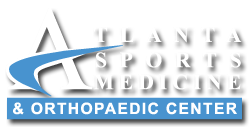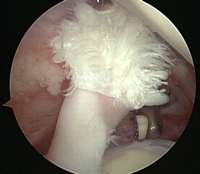Biceps Tenodesis Protocol
The purpose of this protocol is to provide the clinician, therapist, and patient with a GUIDELINE of the postoperative rehabilitation course of a patient that has undergone a Biceps Tenodesis for biceps dysfunction.
The procedure entails cutting the long head of the biceps and reattaching the tendon more distally along the humerus. Multiple techniques exist including screw, anchor, and soft tissue fixation. The procedure is used for chronic biceps dysfunction and detachment from its origin.
Phase I – Passive Range of Motion Phase (starts approximately post op weeks 1- 4)
Goals:
- Alleviate shoulder pain and inflammatory response
- Achieve gradual restoration of passive range of motion (PROM), limit full elbow extension immediately
- Enhance/ensure adequate scapular function
Precautions/Patient Education:
- NO active range of motion (AROM) of the elbow
- NO excessive external rotation range of motion (ROM) / stretching. Stop when you feel the first end feel.
- Use of a sling to minimize activity of biceps x 3 weeks
- Ace wrap upper forearm as needed for swelling control
- NO lifting of objects with operative shoulder
- Keep incisions clean and dry
- No friction massage to the proximal biceps tendon / tenodesis site
- Patient education regarding limited use of upper extremity despite the potential lack of or minimal pain or other symptoms
Activity:
- Shoulder pendulum hang exercise
- PROM elbow flexion/extension and forearm supination/pronation
- AROM wrist/hand
- Begin shoulder PROM all planes to tolerance /do not force any painful motion
- Scapular retraction and clock exercises for scapula mobility progressed to scapular isometric exercises
- Ball squeezes
- Sleep with sling as needed supporting operative shoulder, place a towel under the elbow to prevent shoulder hyperextension
- Frequent cryotherapy for pain and inflammation
- Patient education regarding postural awareness, joint protection, positioning, hygiene, etc.
- May return to computer based work
Milestones to progress to phase II:
- Appropriate healing of the surgical incision
- Full PROM of shoulder and elbow
- Completion of phase I activities without pain or difficulty
Phase II – Active Range of Motion Phase (starts approximately post op week 5-6)
Goals:
- Achieve gradual restoration of AROM
- Begin light waist level functional activities
- Wean out of sling by the end of the 2-3 postoperative week
- Return to light computer work
Precautions:
- No lifting, pushing, pulling
Activity:
- Begin gentle scar massage and use of scar pad for anterior axillary incision
- Progress shoulder PROM to active assisted range of motion (AAROM) and AROM all planes to tolerance
- NO resistance exercises. Active elbow flexion/extension and forearm supination/pronation
• Begin incorporating posterior capsular stretching as indicated
Phase III – Strengthening Phase (starts approximately post op week 7-9)
Goals:
- Normalize strength, endurance, neuromuscular control
- Return to chest level full functional activities
Precautions:
• Do not perform strengthening or functional activities in a given plane until the patient has near full ROM and strength in that plane of movement
Activity:
- Continue A/PROM of shoulder and elbow as needed/indicated
- Initiate biceps curls with light resistance, progress as tolerated
- Initiate resisted supination/pronation
- • Begin rhythmic stabilization drills
- External rotation (ER) / Internal Rotation (IR) in the scapular plane
Milestones to progress to phase IV:
- Appropriate rotator cuff and scapular muscular performance for chest level activities
- Completion of phase III activities without pain or difficulty
Phase IV – Advanced Strengthening Phase (starts approximately post op week 10)
Goals:
- Continue stretching and PROM as needed/indicated
- Maintain full non-painful AROM
- Return to full strenuous work activities
- Return to full recreational activities
Precautions:
- Avoid excessive anterior capsule stress
- With weight lifting, avoid military press and wide grip bench press.
Protocol modified and used with permission from BWH Sports/Shoulder Service.

